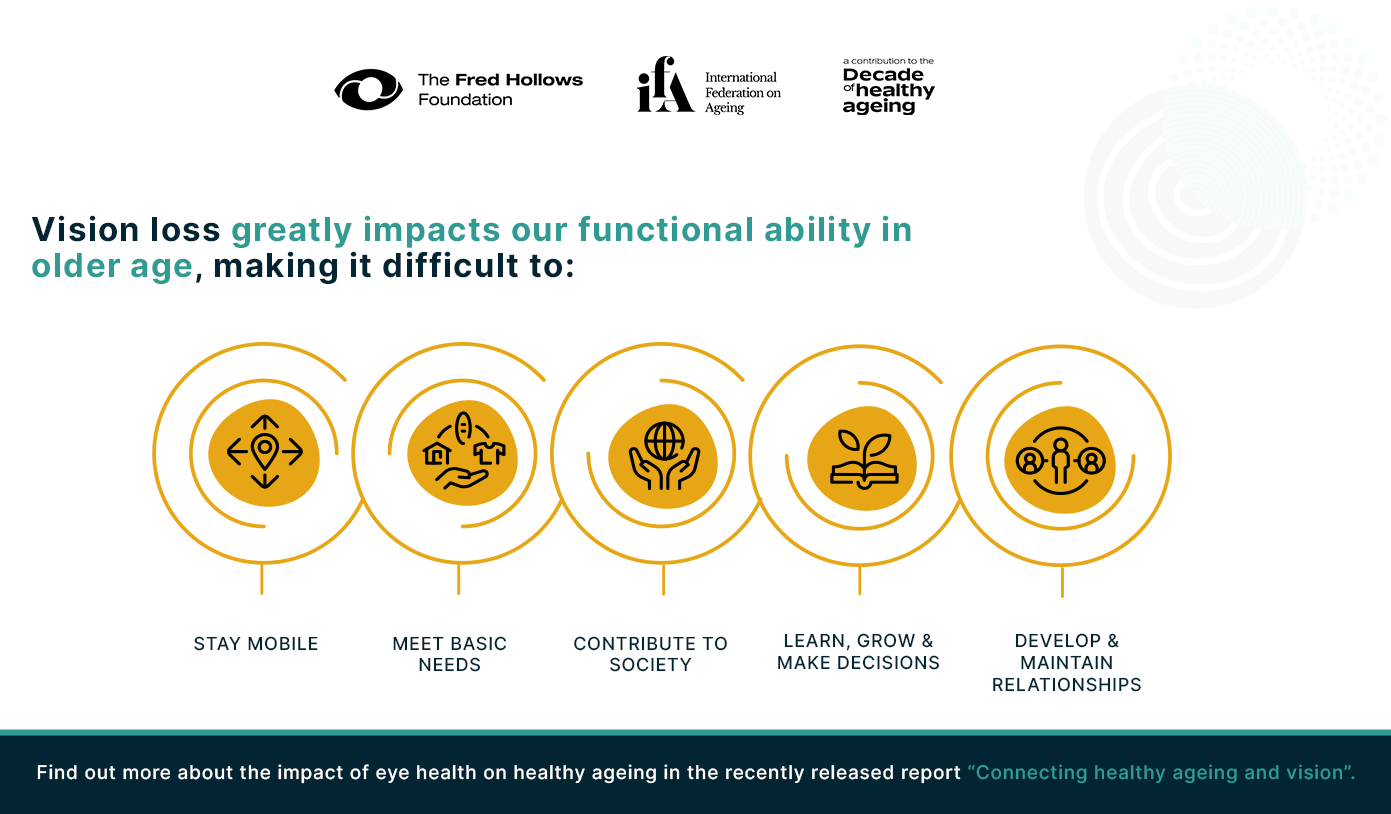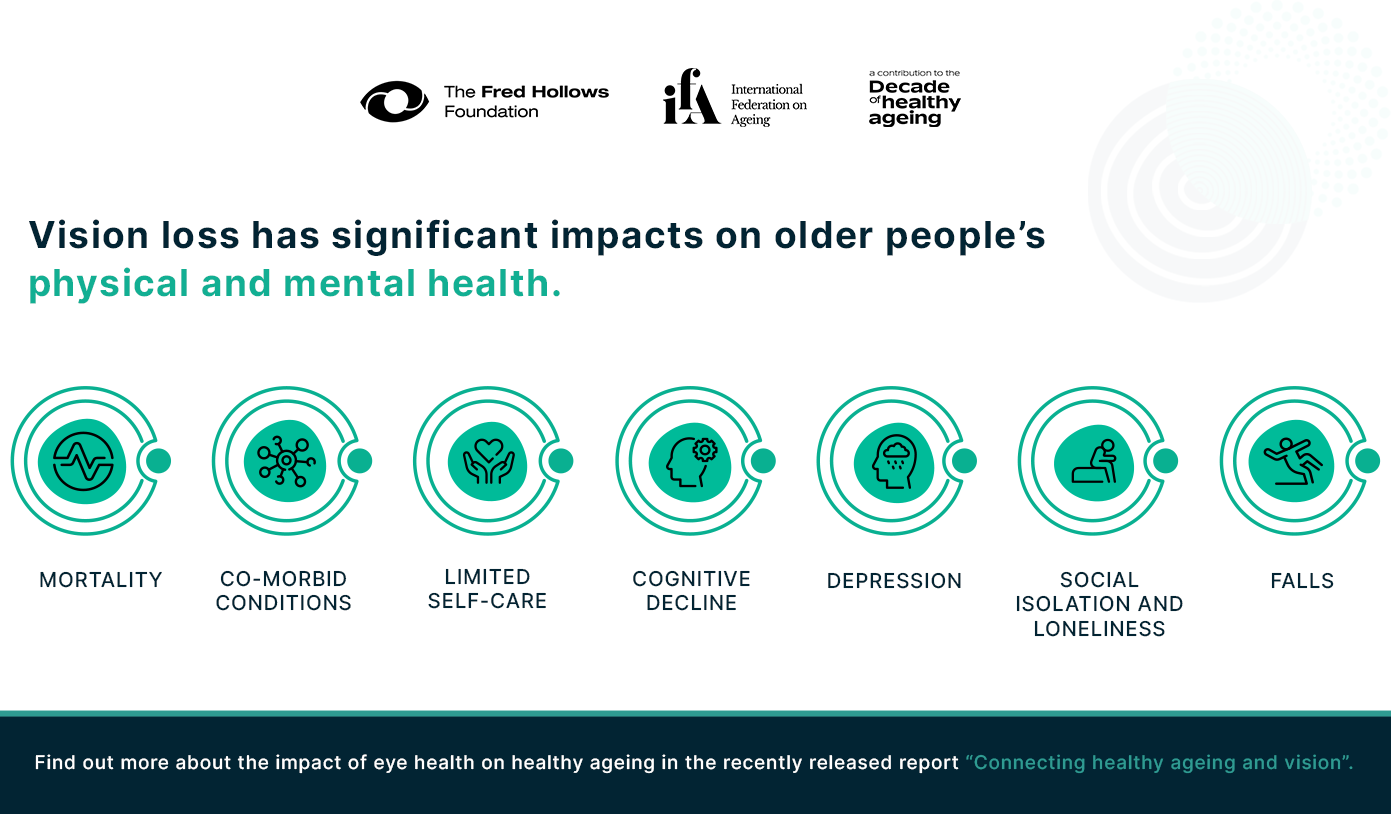#AWorldSightDay Call to Action
Vision as a Pillar of Healthy Ageing: A World Sight Day Call to Action
By Katrina Bouzanis, Director of Policy and Advocacy, International Federation on Ageing (IFA)
Imagine beginning your day and struggling to read the time on the clock beside your bed. You step outside for your morning walk and pass a neighbour without greeting them – not out of unkindness, but because you simply can’t make out their face. Later, as you sit at your computer, the words blur on the screen, making it difficult to work, learn, or connect with someone you love.
Now imagine this is not a temporary challenge, but part of your everyday reality.
This is what vision loss can mean for millions of older adults across the world. It’s not just about the inability to see clearly, it’s about how sight connects us to our independence, our communities, and our sense of self.
As part of the IFA’s work on vision health, I’ve had the privilege of connecting with advocates, healthcare providers, thought leaders, and people living with sight loss. Through conversation and shared action, they have helped me see how much vision shapes the way we live and connect, and how simple health interventions can change people’s lives.
A few key learnings have stood out:
- For many older people, sight loss is viewed as an inevitable part of ageing, something to live with rather than something that can be addressed. But it doesn’t have to be.
- Vision health is too often treated in isolation, rather than as a part of overall health and well-being. Yet evidence demonstrates that declining vision increases the risk of falls, limits physical activity, can lead to social isolation and depression, increased risk of cognitive decline and limit the ability to learn, work, caregive or participate in community.
- Collaboration between ageing and vision advocates can unlock shared actions and solutions to ensure longer, healthier lives supported by good vision.
These learnings remind us that vision health is a key component of healthy ageing and must be addressed with a multisector approach. Despite the intersections with vision health across diverse areas of health and well-being, vision is often left out of national health and ageing strategies, or not covered by public health insurance schemes. This sends a troubling message that vision is not an important part of health.
Even when services are available, pathways from education to screening, diagnosis and care are often complex and difficult to navigate, with long waiting times, delays in follow-up or limited time for patient-provider consultation.
Lack of accessible, affordable and person-centred vision care is not just a gap in the system, it is a missed opportunity and a matter of rights. Preventing and correcting vision loss is among the most cost-effective health interventions available, reducing dependency, enhancing productivity, and maintaining social and economic participation in later life.
As the world recognizes World Sight Day, we must:
- Ensure vision screening and care are available in primary care settings and part of the delivery of person-centred care.
- Integrate eye health into broader health strategies, including ageing, dementia and sensory health.
- Support equitable access to affordable treatments, assistive technologies and rehabilitation services, so that people with eye conditions or vision loss remain engaged and in good function.
- Foster collaboration between the vision and ageing sectors to strengthen policies and practices.
This World Sight Day, let’s commit to making a vision health a priority, ensuring we can all age in good health, inclusion and community.




